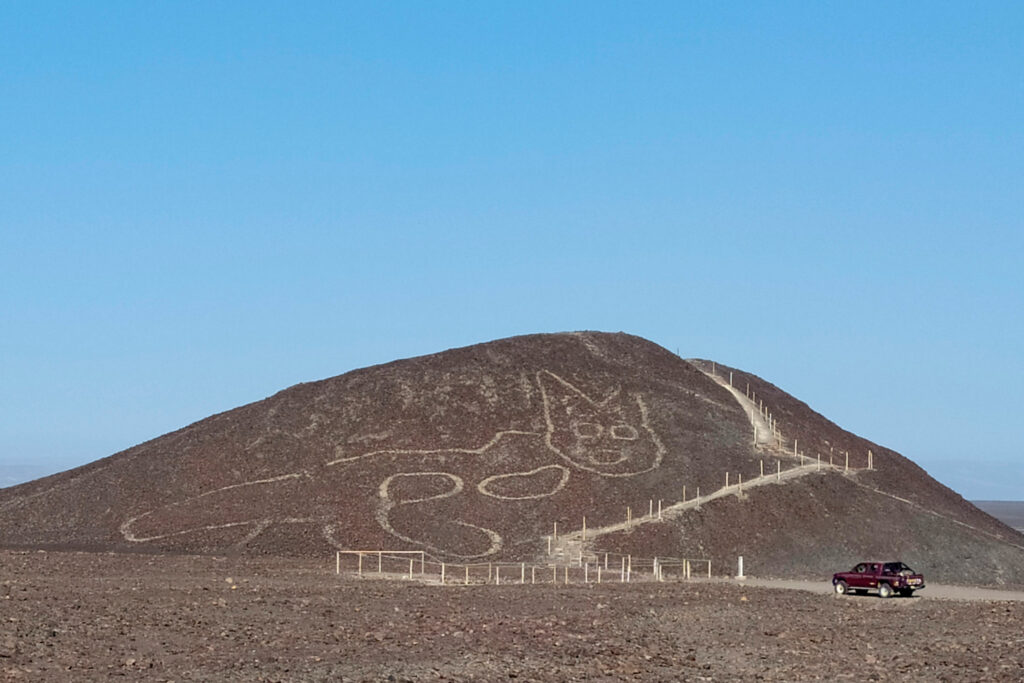A group of archeologists has discovered a massive feline figure carved into an arid hillside in southern Peru over 2,000 years ago. The geoglyph measures 37 meters (121 feet) across and is part of the Nazca Lines, a collection of hundreds of artworks carved onto a plateau near Lima, Peru’s capital.

The newly discovered cat now joints a wide array of other zoomorphic drawings found across Peru over the last century. These include a hummingbird, a monkey, and a pelican. The figure was discovered during maintenance work at a visitor center in what is already a popular tourist destination.
The figure was barely visible and was about to disappear as a result of its location on a fairly steep slope and the effects of natural erosion,” the Peruvian Ministry of Culture said in a press release. “Representations of this type of feline are frequently found in the iconography of ceramics and textiles in the Paracas society.”
The Nazca Lines were created by pre-Hispanic societies that removed the top layers of rock and gravel to reveal a lighter-colored bedrock beneath. UNESCO describes them as “the most outstanding” group of geoglyphs anywhere in the world, unmatched in extent, quantity, size, and diversity.
Despite the pandemic, research and conservation work has continued at the Nazca Lines. Archaeologists and employees were working on the Mirador Natural, a lookout point in the protected site, when they began unearthing something intriguing. The clear lines showing the sinuous body of a cat soon emerged. Following cleaning and conservation work, the archaeologists uncovered a series of lines varying in width from 30 to 40 centimeters (12 to 16 inches). The style of the artwork they found suggests that it was created between 200 B.C. to 100 B.C., in the late Paracas period, the ministry said.
The region has long been of interest to historians. Archaeologist Toribio Mejia Xesspe first discovered the mysterious lines carved into the landscape in 1920. Then, with the expansion of air travel, further artworks were discovered from above. Researchers have continued to uncover more lines and develop theories about them.
“One of the things that continues to surprise, and that many ask, is how we still find new geoglyphs,” said Johny Isla, the director of the Nazca Lines conservation mission at the Ministry of Culture, as quoted by Euronews. “In fact, there are new ones and we will continue to find more,” he said.
Last year, researchers from Japan’s Yamagata University discovered more than 140 geoglyphs in the region with the help of 3D imaging. They were carved out of the sand on a Peruvian coastal plain and resemble both living and inanimate objects.






